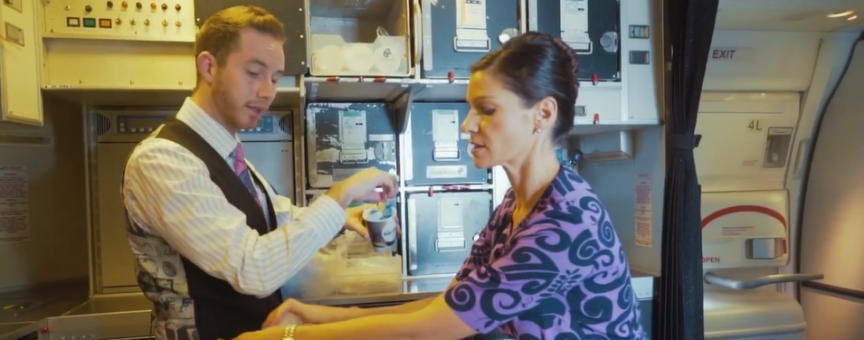In-flight waste diverted from landfill
Air New Zealand has diverted more than 890 tonnes of in-flight waste from landfill two years on from the launch of Project Green, its glass recycling and product use waste reduction initiative. This is equivalent to the weight of five 777-300 aircraft.
Project Green, launched in late 2017, means that unused items from a flight service that previously may have gone to landfill can be put onto a subsequent flight provided they come off the aircraft sealed and untouched.
The reclassification of these items was made possible through a collaboration between the airline, its catering partner LSG Sky Chefs and the Ministry of Primary Industries.
Some of the more than 40 item types Project Green covers includes cans of soft drink, packets of cookies, boxed tea, coffee and sugar sachets and sealed napkins. Prior to the establishment of this process, even unopened items of these product types taken on board would have had to be incinerated.
To date Project Green has meant Air New Zealand has been able to recover the equivalent weight of 2 x A320s of 1.5L Water Bottles (85 tonnes), more than 11.5 million plastic glasses and more than 4 million sticks of sugar.
Air New Zealand’s General Manager Supply Chain Chloe Surridge says in addition to reducing waste to landfill, data captured from the roll out of Project Green in Auckland, Wellington, Christchurch, Queenstown and Los Angeles International airport helps the business to better assess flight loading requirements and to look for opportunities to reduce waste at source.
“We are also working on ways to further segregate the waste that is collected in-flight, for example soft plastics and compostables. A major challenge we face, however, in reducing waste to landfill, is the lack of recycling and composting infrastructure available for us to send our material to. More robust infrastructure across the country, including in the regions, would help us keep compostables and recyclables out of landfills.”
“Project Green is a very good example of the steps Air New Zealand is taking to build sustainability into its supply chain. We are looking to make impactful sustainability gains and, in order to do this, we have to enable those bigger conversations through relationships with our suppliers and business partners.”

